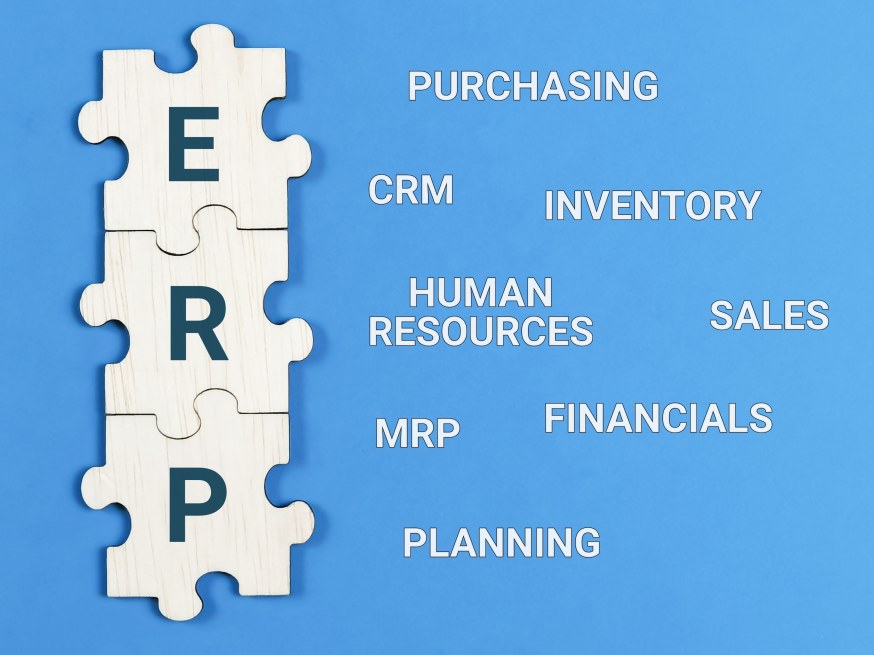In today’s fast-paced business landscape, having a robust and efficient automated inventory control and management system is essential for success. Manual inventory tracking can be time-consuming, error-prone, and hinder productivity.
This is where an automated inventory management system offers businesses many benefits that can significantly improve operations. By leveraging advanced technology and streamlined processes, businesses can gain a competitive edge and achieve greater inventory management efficiency.
The advantages of implementing an automated inventory management system are vast, from enhanced accuracy and real-time updates to improved forecasting and cost savings. In this article, we will explore six key benefits that highlight the importance of an automated inventory management system.
Whether a small business or a large enterprise, embracing automation can transform your inventory management and drive success in today’s dynamic marketplace.
1. Accurate and Real-Time Inventory Tracking
Accurate and real-time inventory tracking is a cornerstone of efficient inventory management. With an automated inventory management system, businesses can monitor and control their inventory levels precisely.
This allows for timely and accurate decision-making, reducing the chances of stockouts or overstocking situations.
By leveraging advanced technologies such as barcode scanning and RFID, businesses can capture real-time data on inventory movement, stock levels, and product information.
Having accurate and real-time inventory tracking provides several benefits. Firstly, it enables businesses to optimize their inventory levels, ensuring they have enough stock to meet customer demand without excessive carrying costs.
This leads to improved cash flow and reduced storage expenses. Secondly, accurate inventory tracking helps in demand forecasting and planning. By analyzing historical data and current trends, businesses can make informed decisions about inventory replenishment and procurement, preventing shortages or excesses.
Furthermore, accurate and real-time inventory tracking supports efficient order fulfillment processes. With accurate inventory information, businesses can quickly locate products, pack orders accurately, and ship them promptly. This results in improved customer satisfaction and loyalty.
2. Enhanced Efficiency and Productivity
Enhanced efficiency and productivity are key benefits of implementing an automated inventory management system. By automating various inventory-related tasks and processes, businesses can eliminate manual work, reduce errors, and free up valuable time for employees to focus on other important activities.
One way an automated inventory management system improves efficiency is through streamlined workflows. It enables businesses to automate tasks such as data entry, updating inventory levels, generating reports, and forecasting demand. This eliminates the need for manual data handling and significantly reduces the chances of any human error.
With accurate and up-to-date information, employees can make informed decisions quickly, improving efficiency and productivity.
Additionally, an automated system facilitates seamless communication and collaboration between different departments involved in inventory management, such as purchasing, sales, and warehouse management teams. Real-time data sharing allows for better coordination, faster response times, and improved overall efficiency in managing inventory.
Moreover, automated inventory management software includes features like barcode scanning, RFID technology, and integration with other business software, such as ERP and CRM systems. These functionalities enable businesses to automate processes like order fulfillment, stock replenishment, and tracking, further enhancing efficiency and reducing the risk of errors.
Ready to supercharge your inventory management with an automated system?
Contact Growth Hackers
3. Improved Demand Forecasting and Inventory Planning
Accurate demand forecasting and efficient inventory planning are crucial for businesses to meet customer needs, reduce costs, and optimize inventory levels. An automated inventory management system is vital in improving these aspects by providing valuable insights and facilitating data-driven decision-making.
With historical data, sales trends, and customer behavior analysis, an automated system can generate accurate demand forecasts. By identifying patterns and predicting future demand, businesses can optimize their inventory levels, ensuring they have the right stock available to meet customer demands without excesses or shortages.
In addition to demand forecasting, automated systems also support efficient inventory planning. Businesses can optimize order quantities, reorder points, and safety stock levels by analyzing historical data, current inventory levels, and lead times.
Furthermore, automated systems provide real-time visibility into inventory movement, allowing businesses to identify slow-moving or obsolete inventory and take proactive measures to manage them effectively. This helps minimize holding costs and maximize available resources’ utilization in the overall inventory management process.
4. Streamlined Order Fulfillment and Replenishment Processes
Efficient order fulfillment and replenishment processes are essential for businesses to meet customer demands promptly and maintain optimal inventory levels. An automated inventory management system streamlines these processes, helping you meet supply chain needs of rapid customer growth, improving operational efficiency and customer satisfaction.
With an automated system, businesses can streamline order fulfillment from start to finish. When an order is placed, the system can automatically generate picking lists or work orders, ensuring that the right products are picked, packed, and shipped accurately. This eliminates redundant paperwork and expedites order processing.
Furthermore, an automated system enables businesses to implement advanced order fulfillment strategies such as wave, batch, or zone picking. These strategies optimize the order fulfillment process by grouping orders or products based on location or characteristics, minimizing travel time, and increasing picking efficiency.
In addition to order fulfillment, automated systems facilitate efficient inventory automation and replenishment processes. By monitoring inventory levels in real time, businesses can set up automatic reorder points or trigger replenishment orders based on predefined thresholds. This ensures timely inventory restocking, minimizing stockout risk and optimizing inventory levels.
Automated systems also enable businesses to leverage demand forecasting and sales data to optimize replenishment. Businesses can fine-tune their reorder quantities by analyzing historical sales trends, seasonality, and lead times, reducing excess inventory and carrying costs.
Moreover, an automated inventory management system can integrate with suppliers or distributors, allowing businesses to automate the procurement process. Electronic data interchange (EDI) or API integrations enable seamless communication and order placement between the business and its suppliers, reducing manual effort and ensuring accurate and automated inventory solutions and timely replenishment.
5. Cost Savings Through Optimized Inventory Levels
Optimizing inventory levels is crucial for businesses to balance meeting customer demands and minimizing holding costs. An automated inventory management system enables cost savings through efficient inventory optimization strategies.
Needless to say that inventory management will help you reduce logistics costs. By implementing an automated system, businesses gain real-time visibility into inventory data, allowing them to analyze stock levels, demand patterns, and lead times.
With this information, businesses can optimize inventory levels by setting accurate reorder points, safety stock levels, inventory counts, and order quantities.
By avoiding excessive inventory, businesses can reduce holding costs such as warehousing, insurance, and depreciation. Holding excess inventory ties up capital that could be invested in other business areas. Moreover, excess inventory increases the risk of obsolescence or product spoilage, leading to financial losses.
On the other hand, inadequate inventory levels can result in stockouts, missed sales opportunities, and dissatisfied customers. An automated inventory system ensures that businesses maintain optimal inventory levels, minimizing stockouts and maximizing sales potential.
Automated inventory management systems enable businesses to implement just-in-time (JIT) inventory practices. JIT aims to minimize inventory holding costs by receiving goods from suppliers when needed in the production or order fulfillment process. By synchronizing the supply chain with demand, businesses can reduce the need for large inventory stockpiles and associated costs.
Furthermore, an automated system helps businesses identify slow-moving or obsolete inventory. By analyzing sales data, product shelf life, and demand trends, businesses can take proactive measures to manage slow-moving inventory, such as implementing targeted marketing campaigns, offering discounts, or liquidating stock. This optimizes inventory levels and reduces the risk of holding obsolete or non-selling products.
6. Seamless Integration with Other Business Systems (e.g., ERP, CRM)
An automated inventory management system becomes even more powerful when integrated with other essential business systems, such as Enterprise Resource Planning (ERP) or Customer Relationship Management (CRM) software. This integration enhances data accuracy, streamlines workflows, and enables better decision-making across various business functions.
Integrating an automated inventory management system and an ERP system allows for the seamless exchange of data related to automated inventory systems, sales, procurement, and finance. This integration ensures that information flows smoothly between departments, eliminating the need for manual data entry or data synchronization.
By integrating with CRM systems, businesses can align inventory with customer relationship management. This integration gives businesses a comprehensive view of customer demand, order history, and preferences, allowing for more accurate demand forecasting and inventory planning.
Furthermore, integration with CRM systems enables businesses to improve customer service by providing accurate information on product availability, order status, and delivery timelines. This real-time visibility enhances customer satisfaction and builds stronger customer relationships.
Integrating an automated inventory management system with other business systems streamlines workflows and eliminates duplicate tasks. For example, when a sales order is placed, the integration of an automated inventory control system can automatically update inventory levels, trigger purchase orders or production orders, and initiate the fulfillment process. This reduces manual effort, minimizes the risk of errors, and accelerates order processing time.
Moreover, integrating with financial systems allows for better financial control and accurate cost tracking. Businesses can monitor and manage inventory and costs, track profitability, and generate accurate financial reports by integrating inventory data with accounting or financial management software.
Maximize efficiency and accuracy with an automated inventory management system today!
How to Choose the Best Inventory Management Software?
Inventory management is critical to any business, and choosing the right software to handle this task efficiently is essential. With numerous inventory management software options available in the market, selecting the best one for your business can be overwhelming. To help you make an informed decision, here are some key factors to consider when choosing the best inventory management software.
Assess Your Business Needs
When choosing the best inventory management software, it is crucial to assess your business needs first. Take the time to understand the specific requirements of your inventory management processes. Consider factors such as the size of your business, the volume of inventory you handle, and the complexity of your supply chain. This self-assessment will help you identify the functionalities and capabilities you need in inventory management software.
Scalability and Flexibility
Scalability and flexibility are important factors to consider when selecting inventory management software. Your business may experience growth over time, and your software should be able to accommodate that growth. Look for a solution that can handle increasing products, locations, and users. Additionally, consider software that integrates well with other systems, such as accounting or e-commerce platforms. This integration ensures smooth data flow across different departments and minimizes manual data entry.
Usability
Usability is a key consideration when choosing inventory management software. The software should have an intuitive, user-friendly interface that your team can easily navigate. Complex software may require extensive training, leading to productivity loss. Look for a solution that offers a streamlined and straightforward user experience, minimizing the learning curve for your staff.
Reporting and Analytics Capabilities
A robust inventory management software should provide comprehensive reporting and analytics capabilities. These features allow you to track key metrics such as stock levels, sales performance, and demand forecasting. Generating customized reports and gaining valuable insights into your inventory can greatly improve decision-making and optimize your supply chain.
Automation Features
Automation can significantly enhance your inventory management processes. Look for software that offers automatic reorder points, barcode scanning, and real-time updates. These automation capabilities eliminate human errors, save time, and streamline operations. Additionally, consider whether the software supports mobile devices, as this can enhance flexibility and accessibility for your team.
Security
Security is a critical aspect of any software, especially regarding inventory management. Ensure the software provides robust security measures, including data encryption, user access controls, and regular backups. Protecting your inventory data from unauthorized access and potential loss is essential.
Cost and Vendor Support
Evaluate the cost structure of the inventory management software and determine if it aligns with your budget. Some software offers subscription-based pricing, while others require a one-time payment or additional fees for certain features. Additionally, research the vendor’s reputation for customer support. Timely and reliable support is crucial in case of any technical issues or assistance needed during implementation.
By considering these key factors you can make an informed decision and choose the best inventory management software for your business.
Final Words on the Benefits of Having an Automated Inventory Management System in Place
Implementing an automated inventory management system is crucial for businesses seeking to optimize their operations and stay ahead in a competitive market. Such a system eliminates manual errors, enhances efficiency, improves customer satisfaction, and enables data-driven decision-making. By streamlining inventory control and automating essential tasks, businesses can save time, reduce costs, and improve productivity.
Moreover, real-time inventory visibility ensures timely order fulfillment and empowers businesses to meet customer demands effectively. Embracing an automated inventory management solution is not just a luxury but a necessity in today’s fast-paced business landscape, enabling businesses to thrive and grow sustainably.
Growth Hackers is one of the top marketing automation agencies helping businesses from all over the world grow. There is no fluff with Growth Hackers. We help entrepreneurs and business owners use automated inventory management system effectively, increase their productivity, generate qualified leads, optimize their conversion rate, gather and analyze data analytics, acquire and retain users and increase sales. We go further than brand awareness and exposure. We make sure that the strategies we implement move the needle so your business grow, strive and succeed. If you too want your business to reach new heights, contact Growth Hackers today so we can discuss about your brand and create a custom growth plan for you. You’re just one click away to skyrocket your business.









